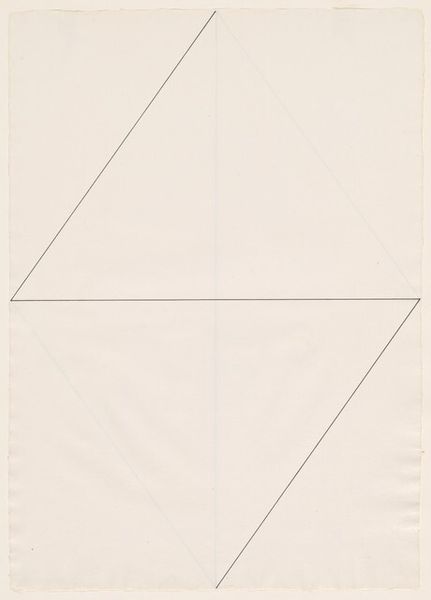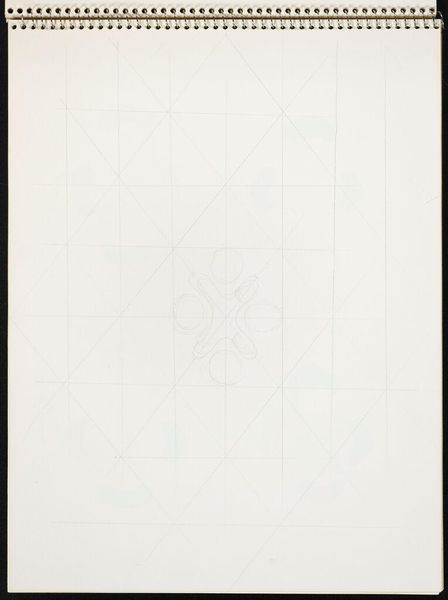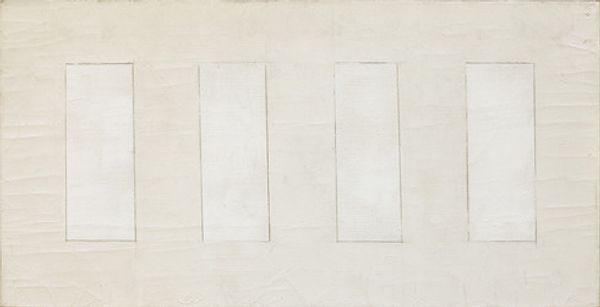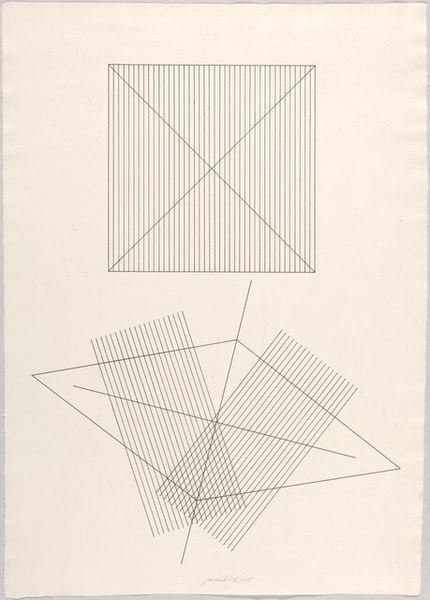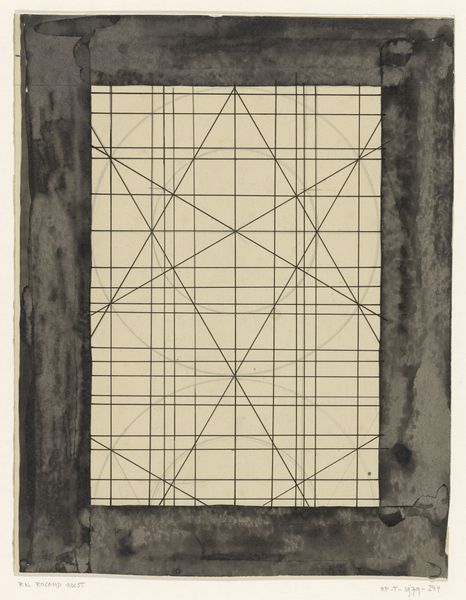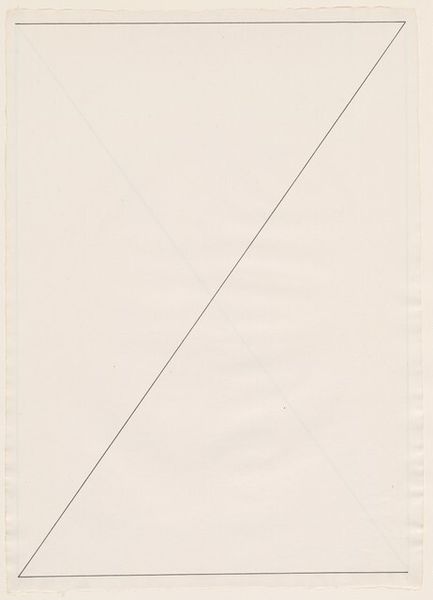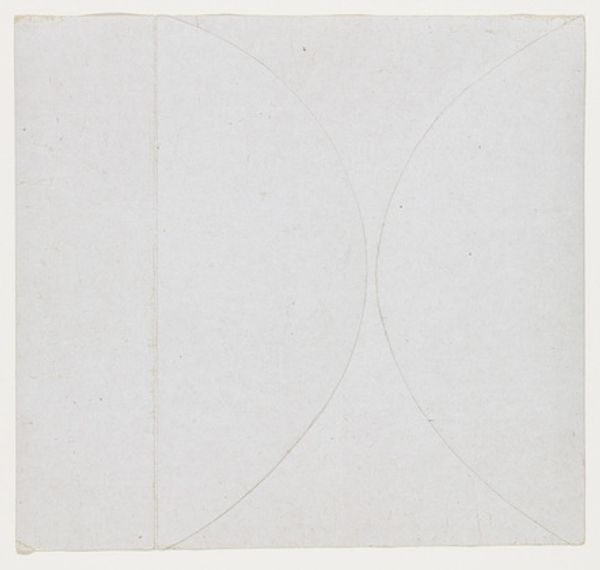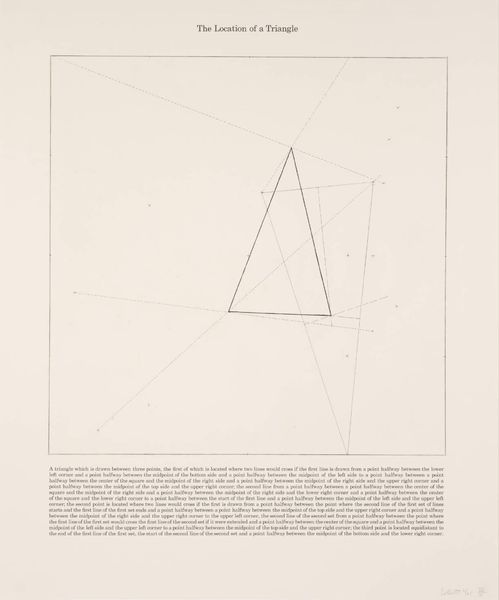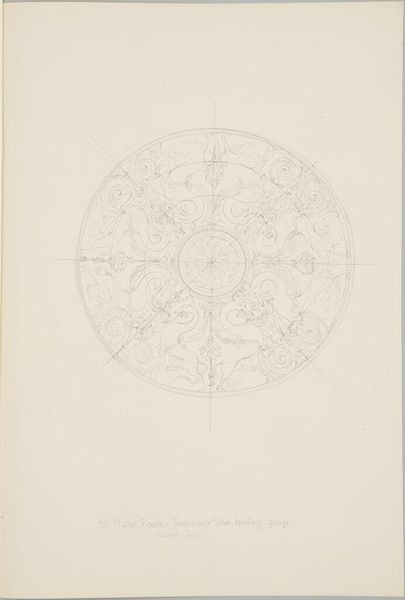
drawing, graphite
#
drawing
#
geometric
#
abstraction
#
graphite
#
modernism
Dimensions: sheet: 76.2 x 63.5 cm (30 x 25 in.)
Copyright: National Gallery of Art: CC0 1.0
Curator: At first glance, I find the delicate tracery of graphite lines composing Edward Steichen's "Study for 'The Radio Gull'" quite compelling. Created around 1960, it seems like a geometric exploration on paper. Editor: Yes, the meticulous grid overlaid with dynamic diagonals creates an interesting tension. My immediate sense is of constraint, followed by an explosive potential. It feels like a visual representation of controlled chaos. Curator: Indeed. Knowing Steichen, with his early Photo-Secessionist roots and his later embrace of modernism, this drawing speaks to the push and pull between capturing observed reality and the lure of pure abstraction. Those perfectly ruled lines create a rigid foundation that his diagonal additions seem to defy, even fracture. Editor: The “Radio Gull” title throws another layer onto this, doesn't it? Considering the socio-political context of 1960—the height of the Cold War—could we see the grid as a symbol of state control and surveillance, the "radio" implying constant monitoring, while the gull signifies a desire for freedom? The angles representing trajectories of dissent, perhaps? Curator: That's a potent reading. And "gull" implies trickery, deception. There’s something else—gulls as archetypal symbols are often tied to scavenging and survival, attributes not often celebrated in American culture. Are we seeing that hinted here, maybe resistance and existing apart from, even taking from, such imposed restrictions? Editor: It also strikes me that the modernist abstraction mirrors mid-century societal shifts in the wake of wartime devastation, moving away from figurative art and representational clarity into a more fractured mode of reflecting human existence. It resists easy readings, demanding viewer interpretation, much like the anxieties of the Atomic Age. Curator: The very deliberate mark-making speaks to a careful process of planning, a constant calibration between rigid systems and free-flowing energy, mirroring the turbulent times you speak of, perhaps a cultural yearning for simpler, purer symbolic forms amidst growing distrust and propaganda. Editor: It becomes far more compelling seeing it as something much larger than simply preliminary sketches. Understanding abstraction to be a conscious commentary opens a new window onto Steichen. Curator: Absolutely, layers of symbolic potential transform seemingly technical preparation for an eventual painting into commentary far larger than just an early plan for an artwork. It shows us art reflecting life.
Comments
No comments
Be the first to comment and join the conversation on the ultimate creative platform.
